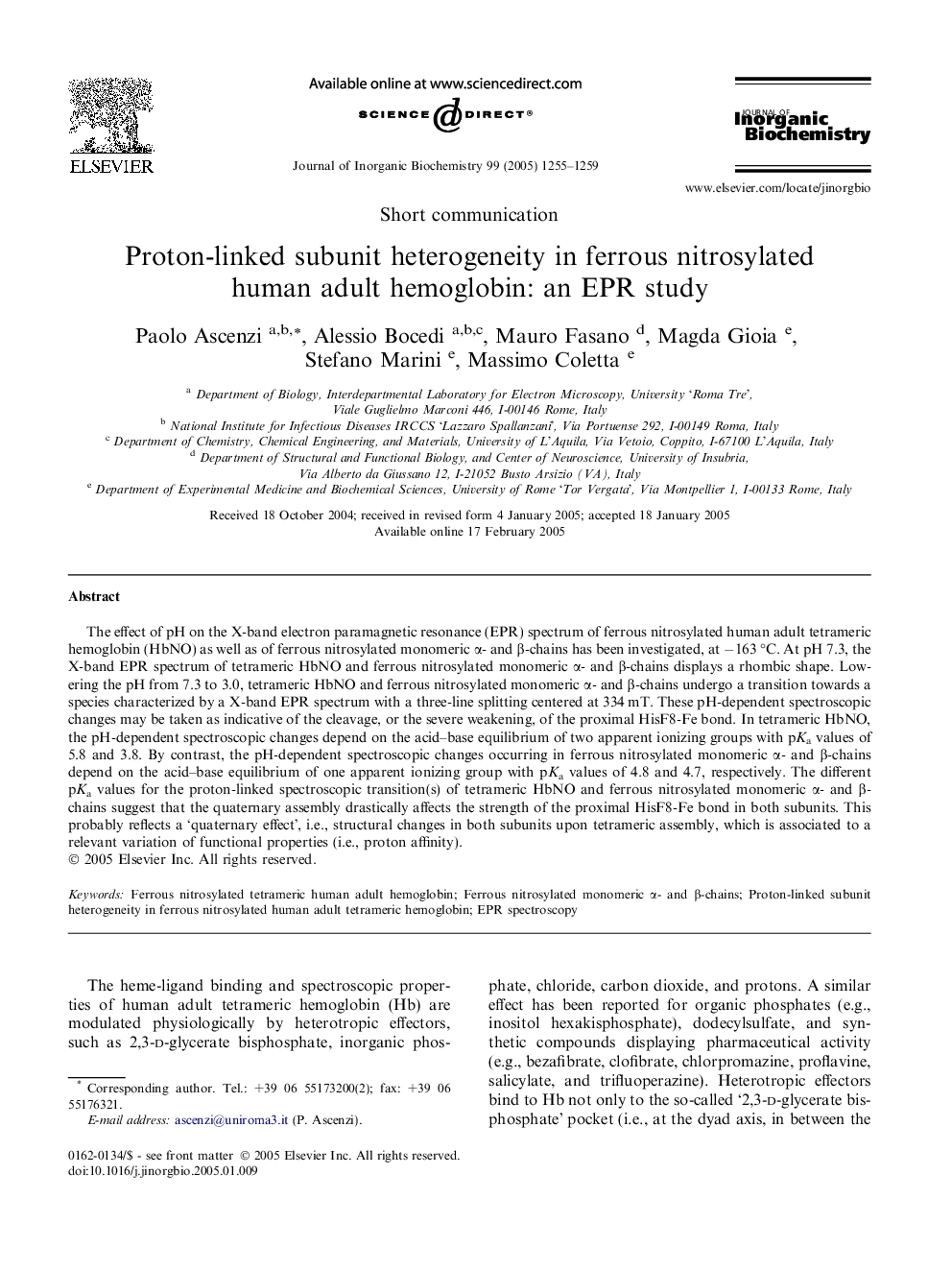| Article ID | Journal | Published Year | Pages | File Type |
|---|---|---|---|---|
| 10574337 | Journal of Inorganic Biochemistry | 2005 | 5 Pages |
Abstract
The effect of pH on the X-band electron paramagnetic resonance (EPR) spectrum of ferrous nitrosylated human adult tetrameric hemoglobin (HbNO) as well as of ferrous nitrosylated monomeric α- and β-chains has been investigated, at â163 °C. At pH 7.3, the X-band EPR spectrum of tetrameric HbNO and ferrous nitrosylated monomeric α- and β-chains displays a rhombic shape. Lowering the pH from 7.3 to 3.0, tetrameric HbNO and ferrous nitrosylated monomeric α- and β-chains undergo a transition towards a species characterized by a X-band EPR spectrum with a three-line splitting centered at 334 mT. These pH-dependent spectroscopic changes may be taken as indicative of the cleavage, or the severe weakening, of the proximal HisF8-Fe bond. In tetrameric HbNO, the pH-dependent spectroscopic changes depend on the acid-base equilibrium of two apparent ionizing groups with pKa values of 5.8 and 3.8. By contrast, the pH-dependent spectroscopic changes occurring in ferrous nitrosylated monomeric α- and β-chains depend on the acid-base equilibrium of one apparent ionizing group with pKa values of 4.8 and 4.7, respectively. The different pKa values for the proton-linked spectroscopic transition(s) of tetrameric HbNO and ferrous nitrosylated monomeric α- and β-chains suggest that the quaternary assembly drastically affects the strength of the proximal HisF8-Fe bond in both subunits. This probably reflects a 'quaternary effect', i.e., structural changes in both subunits upon tetrameric assembly, which is associated to a relevant variation of functional properties (i.e., proton affinity).
Keywords
Related Topics
Physical Sciences and Engineering
Chemistry
Inorganic Chemistry
Authors
Paolo Ascenzi, Alessio Bocedi, Mauro Fasano, Magda Gioia, Stefano Marini, Massimo Coletta,
